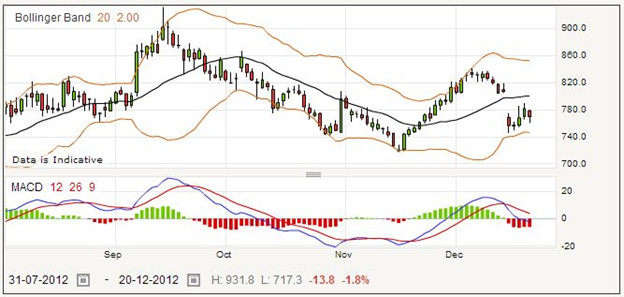Hunting is a leading supplier to the oil and gas industry, and the Hunting family still owns a substantial amount of the business. It is headquartered in London, and you can see from the price chart below that it is an interesting prospect for spread betting, with long trending moves.

The company was originally founded in 1874 as a shipping business. It owned two sailing ships. In the 1890s it bought some oil tankers and extended its capabilities. There are many other aspects to the business of Hunting than that however. In 1944 it established Hunting Aircraft following some years of aircraft maintenance and manufacturing. After the Second World War, in 1945 Hunting went into the airline business, and continued this work after 1953 when it was split off from the main company.
During the 1990s, Hunting went into defence contracting, most notably winning a contract in 1993 to look after the Atomic Weapons Establishment which it did for the next 10 years. However, more recently it has been focusing back on oil and gas activities, and while it has sold off its transport and marketing interests in Canada, it is actively involved in oil well construction as well as the supply of oil platform accessories.
The volatility that is evident in the daily price chart above can be both a good thing and a bad thing. If you are not prepared for it then it can cause you to lose more than you anticipate, so you have to be careful to size your bets appropriately to the size of your account. On the other hand, if you can take advantage of the volatility it will give you large point moves that can add up to significant profit. The overall trends shown above are fairly clearly defined, so a trading strategy which follows the trends will have a good chance of success.
Hunting Rolling Daily: How to Spread Bet on Hunting Shares?
Hunting as a company has been around for many years, although it has changed its focus over time and now is mainly concerned with engineering for oil wells and oil platforms. The price quotation for a daily rolling bet is 765.6 – 769.4. You should perform technical analysis, and back test your trading strategy before risking your money, as then you will have an edge over many other traders. If you think that the price is going down, you might choose to stake £7 per point on a short bet, selling at 765.6.
By way of example, assume that the price goes down to 689.1 – 692.9, and you decide to close the bet. That means that your short bet will close at 692.9. With an opening price of 765.6 and a closing price of 692.9, you have made 72.7 points. For your stake of £7 per point, that will give you a profit of £508.90.
Now an example of a losing bet. Suppose after placing your short bet the price goes up, to say 811.5 – 815.3. Accepting your losses and closing the trade, you work out how much you have lost. The opening price was 765.6, and you closed the bet at 815.3. 815.3 minus 765.6 is 49.7 points. With a stake of £7 per point your loss is £347.90.
It can be a good idea to set a stop loss order when you take out your bet. Most people are not able to keep a track of the market all day long, and a stop loss order takes care of this, as your spread betting provider will close a losing bet for you. The stop loss might have closed your position when the quote went up to 788.55 – 792.35. Taking the opening price of 765.6 away from 792.35, this time you have lost 26.75 points. Multiplying by £7, this amounts to a loss of £187.25.
Hunting Quarterly Futures
Your technical analysis should include looking at charts on different timescales, so that you can assess the overall trends of the stock price. In this case, perhaps you would decide to take out a long position on the far quarter futures bet, which is currently quoted at 768.5 – 777.8. Suppose you decide to stake £6 per point.
Working out a winning position first, say the price goes up to 883.25 – 892.55 and you decide to close your bet. Your long bet was placed at the buying price of 777.8 and closes at the selling price of 883.25. That means you have gained 883.25 minus 777.8 points, which works out to 105.45 points. Multiplying this by £6, your total winnings work out to £632.70.
For an example of a losing position, assume that the price goes down to 722.6 – 731.9 and you end the bet to cut your losses. The starting price was 777.8 as before, and the closing price was 722.6. 777.8 less 722.6 is 55.2 points. With a stake of £6 per point, your losses work out to £331.20.
Many spread traders use a stop loss order on all their bets. The stop loss order requires your spread betting provider to close a losing trade if it reaches a price that you set, and this saves you having to watch the market all the time just in case you need to end the bet. If you had taken at a stop loss order on this bet, you might find that it would be closed for you when the quote reached 745.55 – 754.85. Your bet opened at 777.8. Your spread betting provider closed it for you at 745.55. That means you lost 777.8-745.55 points, which is 32.25 points. Your stake was £6 per point, so this works out to a total loss of £193.50.